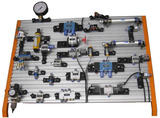
Electropneumatic control system compenent and basic control circuit
- Subject:
- Engineering
- Material Type:
- Module
- Author:
- Azhar Jaffar
- Date Added:
- 11/27/2017

Electropneumatic control system compenent and basic control circuit
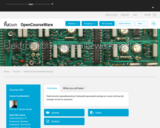
Na het behalen van dit vak kan de student:
filter-overdrachtsfuncties middels state-space synthese afbeelden op filter-topologieen, deze optimaliseren m.b.t. dynamisch bereik en gevoeligheid voor componenten-variaties en realiseren met behulp van integratoren;
circuits voor integratoren, analoge filters, continue-tijd filters, en nullors (operationele versterkers) ontwerpen en effecten ten gevolge van niet-ideale componenten en aliasing analyseren
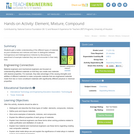
Students gain a better understanding of the different types of materials as pure substances and mixtures and learn to distinguish between homogeneous and heterogeneous mixtures by discussing an assortment of example materials they use and encounter in their daily lives.
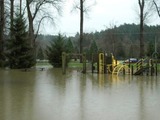
This task, by ClimeTime educators, is for 4th grade students. After class brainstorm of the causes and effects of flooding on a playground or in a local context, students will generate solutions to the problems related to the flooding. Students will select two solutions to describe how the solutions could be implemented and what factors affect the success of the solutions. Students will describe which of the two solutions they think is best and the reasons for their decision.
The resource includes a student task document, teacher guide, and task facilitation slides.
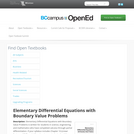
Elementary Differential Equations with Boundary Value Problems is written for students in science, engineering, and mathematics who have completed calculus through partial differentiation. If your syllabus includes Chapter 10 (Linear Systems of Differential Equations), your students should have some preparation in linear algebra. In writing this book I have been guided by the these principles: An elementary text should be written so the student can read it with comprehension without too much pain. I have tried to put myself in the student's place, and have chosen to err on the side of too much detail rather than not enough. An elementary text can't be better than its exercises. This text includes 2041 numbered exercises, many with several parts. They range in difficulty from routine to very challenging. An elementary text should be written in an informal but mathematically accurate way, illustrated by appropriate graphics. I have tried to formulate mathematical concepts succinctly in language that students can understand. I have minimized the number of explicitly stated theorems and defonitions, preferring to deal with concepts in a more conversational way, copiously illustrated by 299 completely worked out examples. Where appropriate, concepts and results are depicted in 188 figures

This unit provides the framework for conducting an “engineering design field day” that combines 6 hands-on engineering activities into a culminating school (or multi-school) competition. The activities are a mix of design and problem-solving projects inspired by real-world engineering challenges: kite making, sail cars, tall towers, strong towers and a ball and tools obstacle course. The assortment of events engage children who have varied interests and cover a range of disciplines such as aerospace, mechanical and civil engineering. An optional math test—for each of grades 1-6—is provided as an alternative activity to incorporate into the field day event. Of course, the 6 activities in this unit also are suitable to conduct as standalone activities that are unaffiliated with a big event.

This is an advanced course on modeling, design, integration and best practices for use of machine elements such as bearings, springs, gears, cams and mechanisms. Modeling and analysis of these elements is based upon extensive application of physics, mathematics and core mechanical engineering principles (solid mechanics, fluid mechanics, manufacturing, estimation, computer simulation, etc.). These principles are reinforced via (1) hands-on laboratory experiences wherein students conduct experiments and disassemble machines and (2) a substantial design project wherein students model, design, fabricate and characterize a mechanical system that is relevant to a real world application. Students master the materials via problems sets that are directly related to, and coordinated with, the deliverables of their project. Student assessment is based upon mastery of the course materials and the student’s ability to synthesize, model and fabricate a mechanical device subject to engineering constraints (e.g. cost and time/schedule).

This course provides an introduction to the fundamental principles and techniques of software development that have greatest impact on practice. Topics include capturing the essence of a problem by recognizing and inventing suitable abstractions; key paradigms, including state machines, functional programming, and object-oriented programming; use of design patterns to bridge gap between models and code; the role of interfaces and specification in achieving modularity and decoupling; reasoning about code using invariants; testing, test-case generation and coverage; and essentials of programming with objects, functions, and abstract types. The course includes exercises in modeling, design, implementation and reasoning.
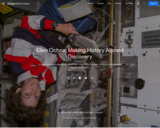
A four time shuttle veteran with more than 1,000 hours in space, Ochoa is an inspirational figure in spaceflight.
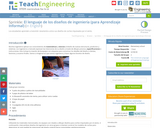
Los estudiantes aprenden a transmitir claramente a otros sus diseños de coches impulsados por el viento.

This course is a computationally focused introduction to elliptic curves, with applications to number theory and cryptography. While this is an introductory course, we will (gently) work our way up to some fairly advanced material, including an overview of the proof of Fermat’s last theorem.

Esta clase virtual es sobre el sonido, sus caracteristicas y sus cualidades, así como la representación gráfica de una onda sonora.

This is intended as an introduction to embedded controllers for students in Electrical Engineering and Technology at the AAS and/or BS level. It begins with a discussion of the C programming language and then shifts to using the open source Arduino hardware platform. Uses both the Arduino library and more direct coding of the controller.

This is the companion lab manual for the text "Embedded Controllers Using C and Arduino 2E". It introduces embedded controller systems using the Arduino hardware platform and the C programming language. It is intended for students in Electrical Engineering and Electrical Engineering Technology programs at the Associate and Baccalaureate levels. Clicking to view this item begins a .doc download.

Explore WWII and Astronaut survival kits, what they contained and culminates with students designing an emergency preparedness kit.
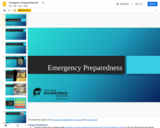
This Presentation supports the Emergency Preparedness Kit Lesson
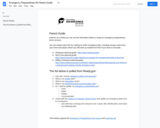
This parent guide supports the creation of an emergency preparedness kit for home along with how to create an entire emergency plan.

This course will focus on providing students with the tools needed to practice responsible architecture in a contemporary context. It will familiarize students with the materials currently used in responsible practice, as well as the material properties most relevant to assembly. The course will also introduce students to materials that are untested but hold promise for future usage. Finally, the course will challenge students to refine their understanding of responsible or sustainable design practice by looking at the evolution of those ideas within the field of architecture.
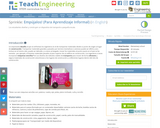
Los estudiantes diseñan y construyen un dispositivo de transporte a pequeña escala.
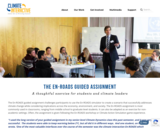
The En-ROADS guided assignment challenges participants to use the free online En-ROADS simulator (https://en-roads.climateinteractive.org/) to create a scenario that successfully addresses climate change while considering implications across the economy, environment, and society. The En-ROADS assignment is used in classrooms, ranging from middle school to graduate level students, and comes in short and long forms. It can also be adapted as an exercise for non-academic settings. Often, the assignment is given following an En-ROADS workshop or Climate Action Simulation role-playing simulation game (https://www.climateinteractive.org/en-roads/).